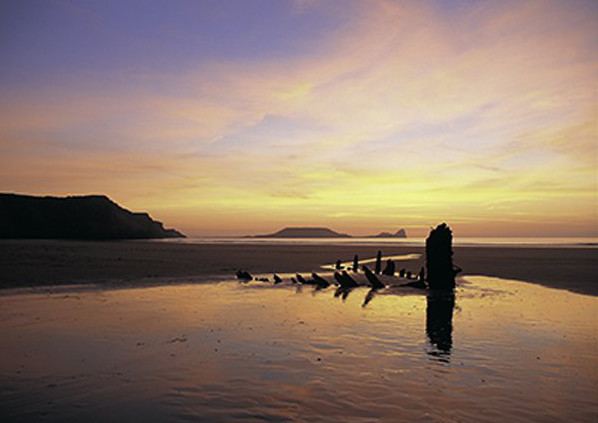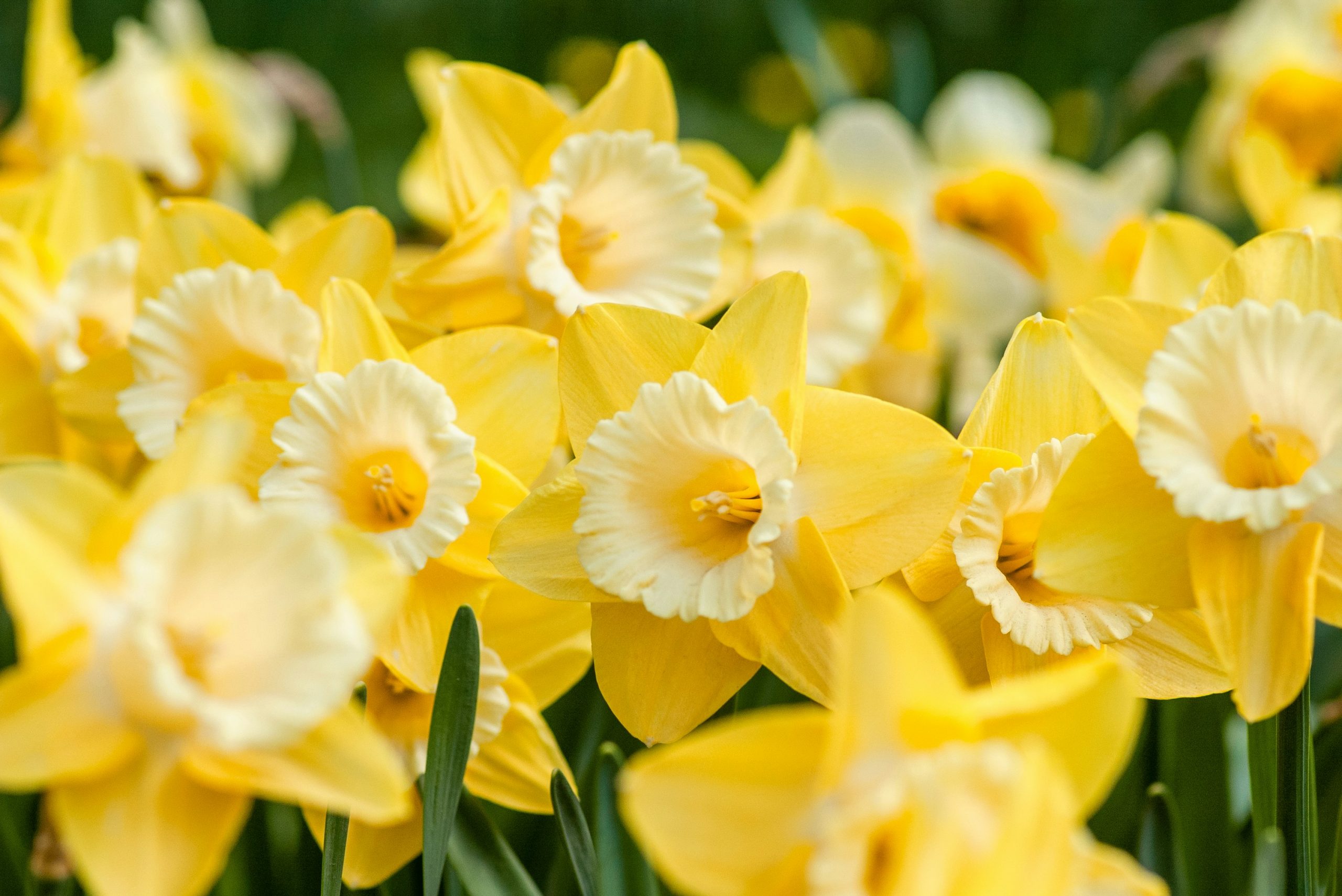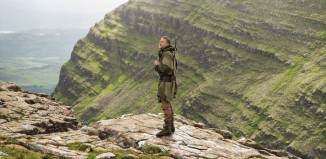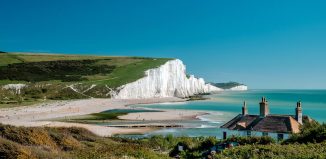Gower Peninsula
Stray a little south beyond Swansea’s urban sprawl and you’ll quickly find yourself on the rambling rural lanes of Wales’s Gower Peninsular. Often overlooked in favour of the coastal charms of Pembrokeshire further west, this quiet corner of Britain more than earns its accolade as an Area of Outstanding Natural Beauty (AONB), offering the visitor a windswept landscape of wild countryside, sweeping sandy beaches and towering headlands.
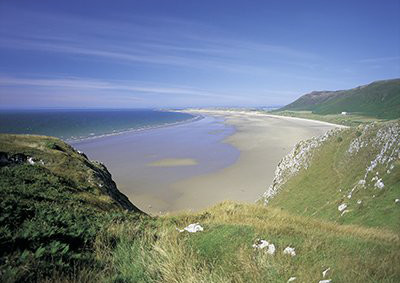
Gower juts out from Swansea Bay and boasts over 40 miles of coastline, some 16 unspoilt beaches, 67 ancient woodlands and nearly 400 miles of rights of way; numbers that proved influential in the area’s designation as Britain’s very first AONB in 1956. Thanks to this recognition, the region’s understated allure has been preserved for future generations. Regardless of local road signs, the speed limits are really imposed by the native wild ponies, sheep and cattle that wander onto the roads at leisure and won’t be hurried. The hands of time seem to have stopped ticking elsewhere on the peninsula: one local farmer continues to till his fields traditionally by horse drawn plough and on Gower’s western fringe, an agricultural plot known as the Vile is still divided into a medieval-age strip field system, originally designed to give equal acreage to farmers of the day.
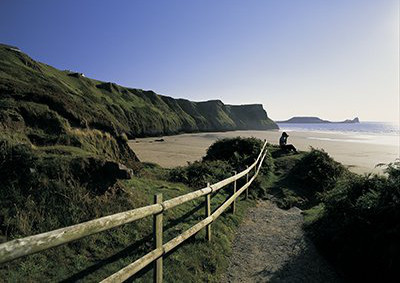
For such a small geographic area, the geography and terrain of the Gower is surprisingly varied. With a balmy climate and fertile soils, farming continues to be a mainstay of the local economy, bolstered by tourism in the summer months. The southerly coastline comprises sandy coves, alternated with treacherous cliffs where many an unwitting seafarer has come unstuck over the centuries. It takes the brunt of the worst weather, but in high season welcomes flocks of pleasure-seekers. The Blue Flag and Green Coast-awarded beaches are maintained armies of eager National Trust volunteers who can frequently be seen cleaning up the areas of coastline protected by the charity. Among these, the bays of Langland, Oxwich, Port Eynon, Three Cliffs and Rhossili remain favourites with visiting families and water sports enthusiasts. Less well-known coastal retreats are Brandy Cove, Pwll Du and Mewslade Bay.
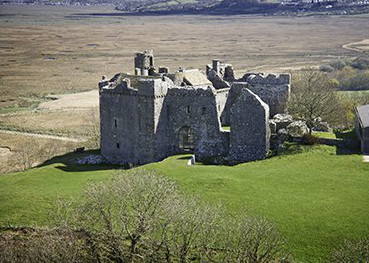
While human activity babbles below, sea birds nest in the precipitous cliffs, and seals and dolphins slip through Gower’s quieter waters. Further inland are rolling fields, wild heath, dunes, marsh and pockets of woodland to explore, but the tell-tale scars of a more tumultuous past are clear to see. Dotted around the peninsular are 83 scheduled ancient monuments, including Neolithic burial sites, ruined fortresses, standing stones and lost villages.
The earliest human remains found on Gower were discovered in a cave at Paviland Bay on the south coast. Excavated in 1823, the skeleton was originally thought to be that of a Roman age prostitute; she was hence known as the Red Lady of Paviland until more scientific findings revealed the true identity to be of a Stone Age man, whose remains were dated at 24,000BC. This remarkable cave finding sparked a flurry of archaeological digs that continued in earnest throughout Victorian times.
“There is so much to Gower’s prehistory that is under-represented,” says local historian and owner of the Gower Heritage Centre, Roy Church. “You have to do your research if you want to find all the sites of interest – there are very few signs to point you in the right direction. The Natural History Museum has thousands of items taken from Gower and I’m considering campaigning to bring some artefacts back. People are still excavating here and finding incredible things – the fossilised remains of a mammoth were found in Bacon Hole cave around Pennard Cliffs a couple of years ago.”
Among the most prominent Neolithic sites is Parc le Breos burial chamber which entombed some 40 settlers near Parkmill. Arthur’s Stone at Cefn Bryn in the centre of the peninsula marks a grave with a difference. Legend says that the 25-ton capstone, which still balances on upright stones, was an irritating pebble in King Arthur’s shoe, which he extracted while walking on neighbouring Llanelli and flung as far as he could. It is thought that the chamber was excavated beneath where the ‘pebble’ landed. As for how it was hoisted into place, the mind boggles.
The dawn of the Iron Age can be traced through signs of defensive structures, such as hill forts and earthworks in prominent locations. The Normans’ legacy is also visible, with 12th century castles, settlements and churches providing a reminder of their time here. From their base at Swansea, Norman knights swamped the peninsula, rewarding local followers with parcels of land on which to build, but continued Welsh rebellion meant that seizing Gower was no easy task.
Arguably the most powerful family to preside were the De Breose who were granted sovereignty of the peninsula by King John in 1203, and whose suffocating hold on the community coffers remained for over a century. They established Parc le Breos, a vast deer park and founded a corn mill at Parkmill, now reinvigorated as the Gower Heritage Centre, (and still equipped with the operational cogs of industry, 1,800 years on).
Parkmill has survived the ages due to engineering that was ahead of its time. After corn milling, it came into its own as a woollen mill, with the wool spinning trade prospering for a period in the early 19th century. During the Napoleonic Wars, the looms were kept busy manufacturing blankets for the troops, while, closer to home, Gower’s cockle pickers were warmed in their work by specially woven Minka blankets. Later the site operated as a saw mill until 1989 when the Heritage Centre was founded.
Penrice Castle is Gower’s largest fortification and is privately owned by the 29th generation of the Penrice family, who are descended from Norman settlers. Several other important fortresses are managed by CADW, the Welsh Assembly Government’s historic environment division, and have been partially restored and maintained as necessary. Oystermouth Castle offers fine views from its position on the Mumbles, and though precarious, parts of its Norman fortifications are still intact. Oxwich Castle is a partially ruined Tudor mansion, with excellent displays travelling through the ages of Welsh history. Sections of the property can be an eerie place to wander, particularly in Gower’s unpredictable sea mists.
In contrast, Pennard Castle is a place to use your imagination, for very little is left of this once mighty fortification, steeped in myth and mystery. Its strategic placement on the cliffs near the famous Three Cliffs Bay (runner up in ITV’s Britain’s Favourite View programme in 2007) meant that it was near invincible. One thing the 12th-century builders didn’t count on was the threat of the encroaching sands in its coastal location.
The great storms that roared around the British coast during the 14th and 15th centuries greatly changed the landscape of Gower, resulting in the huge sand dunes at Nicholston, Penmaen, Rhossili and Whitestone Burrows. A village lost to the sands is said to have existed near Rhossili but few visitors come to find it. More enticing is the three-mile stretch of golden sand, which even in the height of summer rarely feels crowded. Such a luxuriant expanse of beach has to be experienced to be believed. For holidaymakers lucky enough to have checked into the National Trust’s generous accommodation at the Old Rectory overlooking Rhossili beach, there are uninterrupted sea views across to the nature reserve of Worms Head. Peeking above the tides nearby is the oak skeleton of the Helvetia wreck, a timber ship that ran aground in 1887 and was abandoned to decay on the sands.
Leaving Rhossili Bay and heading north the scenery changes dramatically. An iconic landmark off the most northerly point is Whiteford Lighthouse, the only sea-washed, cast iron lighthouse in Britain. Built in 1865 to warn vessels sailing from the opposite shores of Llanelli and Burry Port, it is positioned just above the low-water mark. Time the tides right and walk out to observe its rusty heights before the sea reclaims it, then cross back to Whiteford Burrows where sandy peaks offer ideal picnic spots and far reaching views across the strange panorama of Llanrhidian Marsh. Here, wildfowl and waders paddle in the shallows year round while neighbouring sheep graze freely, their unusual habitat vital in providing the prized salt-marsh lamb, yet another treasure of Gower country.
For more information go to www.enjoygower.com, www.visitswanseabay.com or www.visitwales.com

